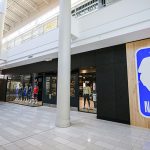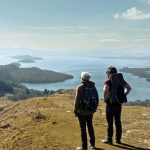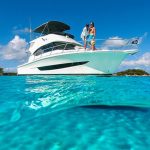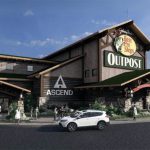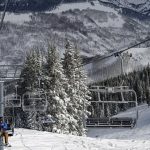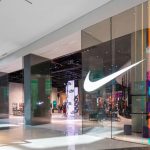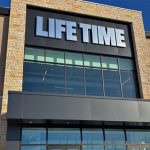The weather wasnt what most from the east coast were hoping for, but the 9th Annual ICR XChange delivered on its promise once again as one of the best run investor conferences in the market. Held this year at the St. Regis Monarch Beach Resort in Dana Point, Calif., the conference drew almost 1,200 people, with roughly 200 presenters joined by a much larger-than-usual crowd of analysts and investors. Many speculated that the heavy attendance was in response to a very strong IPO environment this last year, while an expanded roster of presenting companies also drew a larger crowd.
Among the new presenters this year were Crocs, Inc. and Sport Chalet, while Collective Licensing took advantage of the new private company session on Tuesday. Others not in attendance were still the subject of many of the questions for the presenting companies as analysts looked for any insight into the future fortunes and direction for Dicks Sporting Goods, Under Armour, Gander Mountain, and newly minted public company Heelys, Inc. There was also speculation about who might be making an IPO run in 2007, with the expanded Easton-Bell Sports one of the leading candidates based on input from attendees that spoke with Sports Executive Weekly.
The big questions circled around the impact of the warmer winter on Dicks Sporting Goods, the big-box outdoor guys, The North Face, and Columbia, the prospect for another acquisition to help accelerate the DKS expansion to the west, and the health of Gander, Pacific Sunwear, and others in the face of strong competition and the proliferation of retail square footage. The more nuanced conversation about the future of athletic footwear and how it is sold at retail was lost on many of the attendees, but Crocs, Genesco, Deckers, Skechers, and others all provided perspectives that they see as important in addressing the needs of the lifestyle fashion athletic consumer.
The ICR XChange, held Wednesday and Thursday least week, was preceded on Tuesday and Wednesday by the 5th Annual Cowen and Company Consumer Conference, held at the Weston Times Square in New York City. Notes from both conferences follow
The lifestyle brands again drew the biggest crowds, both in the open presentations as well at the breakout sessions.
ICR kicked of its event with Crocs, Inc., which opened with news that it was in process with another acquisition and expanded its licensed offering with new NHL and NFL deals.
Crocs acquired hockey company Fury, Inc. which was founded in 2002 by former NHL star Keith Primeau and two other partners. The acquisition took place in October of 2006, and Fury is now operating as a wholly owned subsidiary of Crocs. Crocs will use Fury to introduce Crocs' proprietary Croslite material to the hockey and lacrosse markets.
In addition to the Fury acquisition, Crocs signed licensing agreements with both the National Football League and the National Hockey League. Both licenses apply to both Crocs footwear to its recently-acquired Jibbitz business. The NFL deal allows Crocs to license agreed logos for all 32 NFL teams, as well as the League, the Super Bowl and Pro Bowl, while the NHL deal allows Crocs to license agreed logos for all 30 NHL teams and related NHL properties.
Management said they now serve 9,500 retail doors in U.S., but will be a bit more selective about adding doors in U.S. going forward. They have 8,000 doors in the international market, but think the international number will surpass the U.S. door count next year. Jibbitz, which was acquired in December, was in 600 doors prior to acquisition and management sees the accessory line as a big opportunity for the international business. International is expected to be 50% of the business by year-end 2007.
The average selling price at retail, which runs between $25 and $30, may decline a bit as the childrens business expands, but Jibbitz adds dollars back as an add-on sale with every pair sold. CROX expected they might see a few Jibbitz sold with the kids shoes, but retailers are suggesting that the average is about six Jibbitz sales with every pair sold. The kids business is now about 22% to 23% of the overall business today and Jibbitz are currently carried by roughly 25% of the retail stores, so the opportunity is substantial.
Perhaps the biggest news here is that CROX is clearly positioned to move to the next level, beyond the perception of a one-trick pony and into a solid footwear resource with some technology it can roll out into hardlines and a real opportunity in apparel. Retailers are apparently giving them license to move beyond the clog and 2007 should see the company expand their presence in the juniors casual business and better flip-flops. CROX has also spent to develop infrastructure to support growth and is rolling out a new racking package at retail, with Nordstrom leading the charge with new upgraded racks.
In addition to Nordys, Dillards, Journeys, and Dicks SG round out the top four retail customers. They are opening Macys and Tillys in 2007. Management said the southeast is their best region, but are weakest on both coasts.
The question of exposure to seasonality was raised as well and management readily admits that it is a potential limiting factor, but there is real evidence that the warmer weather this year had actually been an opportunity for them. The new licensed deals, which commenced with the NCAA deals in September, should fuel more third and fourth quarter revenues. Nordstrom apparently reported that Crocs was the number two selling shoe in their stores over the holidays.
The Fall 2007 Crocs apparel launch is expected to be mostly accessories, but look for a full apparel launch for Holiday 07. The limited release of product for Holiday 06 apparently sold through well.
Crocs is currently making 3.6 million pairs of shoes per month and will ramp up to roughly 45 million by mid-spring and 5.0 million pair by year-end.
Volcom saw its stock surge more than 11% for the week after it wowed analysts, especially in talking about its plans for Europe, which had many concerned previously. The company said that the project, which has a licensee deal converting to a direct sales set up by fall, is both “on-calendar and on-budget” within the $2.5 budgeted spend. Sales in the region increased 23% for the first nine months of 2006 to approximately $30 million based on the amount that VLCM received in licensing revenues. During the first half, the company will still be investing in the region, but expects all of those costs to be offset during the second half, making 2007 flat and expanding sales in 2008.
VLCM currently has three branded stores in operation and expects to open a fourth in Maui in spring 2007. Management said they were still deciding whether owned-retail was just a good marketing technique or a “viable distribution strategy.” As for retail customers, Volcom has added 50 Macys West doors for the mens line and 20 doors for boys. They also opened 20 Maurice doors in the Midwest.
The company has seen CAGR for sales of 38.1% of the last five years with an operating margin of 21.7% and inventory turn approximately 8.9 times per year.
Management said that the “west coast lifestyle apparel” category has grown five-fold over the last four years and sees big upside for a company that is just one-twelfth the size of Quiksilver, Inc.
Quiksilver, Inc. management still has their hands full building the winter sports side of their business and still feels that they are at the beginning stages of integrating Rossignol into their corporate structure and culture. Steve Brink, the companys CFO said that Rossignol is still making skis for skiers, but they will move the brand beyond that and transform it into an alpine mountain lifestyle company. Quik clearly sees some major opportunities by addressing this audience, claiming that the outdoor lifestyle market is “about ten times” the size of the surf lifestyle market.
On the manufacturing side of Rossignols business, Quiksilver has made some strides by moving a portion of the ski and snowboard to Spain, where there are lower wages. However, the big move will come next summer, when Quik plans to close down one factory and significantly downsize another. This will give Rossignol $20 million to $25 million in production savings on top of $20 million in SG&A savings. At the end of the year Quik is expecting the brand to have approximately a 6% operating margin and the target is to have that at 13% to 14% in 2010.
Looking forward, Quiksilver expects to see strong organic growth across all of its brands, bringing revenues up to between $2.86 billion and $3.3 billion in the next two to four years. Specifically, they are expecting Quiksilver revenues to hit $900 million to $1.0 billion; Roxy revenues at $800 million to $900 million; DC at $350 million to $450 million; Rossignol at $550 million to $650 million; and Cleveland, $190 million to $220 million in that same time frame. On a separate note, the company is expecting Rossignols newly re-designed apparel line to grow from $50 million to $100 million in total by 2008 and then to $150 million in 2010. Operating margins at Rossi are expected to grow from current 6% neighborhood to a range of 13% to 14%.
Oakley, Inc. saw its trailing 12-month revenues increase 14.1% to $728 million with optics accounting for 73% of sales. The company has product sold in more than 110 countries with 79% of sales in the wholesale channel.
Oakley management expects annual sales growth of at least 10% with EPS and EBITDA exceeding sales growth and ROIC improving annually with an initial target of 17%. The company will expand its womens line, which launched in 2006, for 2007 with a doubled SKU count. The coming year will also see Oakley focus on polarization and hydrophobics. The fall of 2007 will provide the first look at the companys new performance apparel line, which has been realigned under several categories. Footwear will focus on sandals, boots, and golf shoes.
On the owned-retail front, OO expects to open between 30 and 40 stores in 2007 to add to their 121 doors under the consolidated Sunglass Icon nameplate. Management said that the companys owned-retail business saw “comparable store sales increases across all three platforms.”
Pacific Sunwear management admitted that 2006 was a “difficult year,” but was excited about the prospects of the portal design being introduced in many of the new and relocated stores. The new stores are typically between 4,000 and 9,000 square feet with 60 stores in total opening in the new format since the first opened in July 2005. For the coming year, the company expects to increase square footage approximately 4% with most new stores in the new portal design.
PSUN management currently sees the girls business accounting for approximately 45% of sales, while the main competition sees girls take up approximately 70% of the business. PSUN sees a major growth opportunity here and hopes the new portal design will help. In addition to the new design, the company is undergoing a refresh in its existing shops that costs approximately one-third of opening a new store and will focus initially on the top 200 doors in the chain.
At demo, the company sees an opportunity for private label product. Currently accounting for approximately 10% of sales, management sees PL at possibly 20% of sales.
One Thousand Steps raised its age demographic to the 18- to 30-year-old, while management said that “acceptance of the concept has been mixed,” with half of the stores doing well while the other half not so great. Nine of the stores are currently in operation.
The company is also building a new distribution center in Olathe, Kan., which will be 400,000 square feet and will house the denim, shoe, demo, and outlet businesses. The company sees the DC as expandable to 800,000 square feet and expects it to open “sometime in the first half of next year.”
The company is currently searching for a new CEO to replace interim Sally Kasaks, with management saying they expect to have a replacement in place by the end of the first half, with hopes of having that new CEO named by the end of the first quarter.
While Pacific Sunwear struggles, Zumiez continues to post very strong comp results. Management believes that much of their success is based on the commitment of their employees to the companys goals. Every regional and divisional manager has come up through the stores. They see heir other key differentiator as hardgoods. They also expect to stay committed to the branded business. “We are a 100% brand-driven business,” said CEO Richard Brooks.
ZUMZ management sees their 2007 expansion focused on Southern California, Florida and the Northeast.
Genesco provided some more detail on their various retail divisions. Journeys stores are averaging 1,775 sq ft and are producing about $470/ square foot and deliver 12.7% in operating profit. Sales are roughly 50/50 men to women, with about 10% of sales generated in accessories. Twenty brands do 70% of sales. Management expects athletic footwear to remain strong into H1 2007. Shi is 15% to 20% athletic. Management said that brand identification is now the third most important influence on sales of fashion footwear with women. Now look is top influence, followed by price. New stores do $688K in first year. GCO will open 50 Journeys doors and 35 Shi stores in 2007.
Management loves the Crocs business because its pegged presentation makes it an almost self service product. The retailer can add product but doesnt have to commit to incremental back room space to grow sales. They said that the Vans brand is now “Kleenex” to the urban consumers adopting the Skurban concept, merging skate and urban.
Underground station stores do $400/sf, but management said that the urban market remains “challenging.” They will convert from athletic base to female fashion in hopes of growing sales. Looking at “plus-size” market here as differentiator.
HatWorld stores do $411/ sq. ft. and stores open at full maturity. Management sees growth coming from new store openings. They will open 90 stores in 2007. Division closed on acquisition of Hat Shack, Inc. for $16.6 million last week, adding their 49 stores to the mix. Genesco said it expects the acquisition to have a slightly positive effect on the Company's earnings for the fiscal year ending February 2, 2008. The embroidery program at Hat Shack is seen as key. Hat World currently has 150-160 doors (20%) with embroidery machines which add 8% incremental sales at higher gross margins. The machines cost $20k per store.
Skechers USA management said that owned-retail will hit about $230 million, or 21% of sales, this year. They plan 20 store openings this year, but there are no plans for retail stores for sub brands, beyond the Soho Lab store. Fourth quarter comps were up in the high-single-digits.
The international business will be about 18% of the total business and smaller fashion brands add about $100 million in revenues in the aggregate. Fourth quarter SG&A will increase based on bonuses and marketing and management said that Q4 wholesale grew faster than owned-retail and Q4 at-once grew faster than backlog. They expect inventory to be up against LY but “at appropriate levels”
SKX now expects fourth quarter 2006 revenues to be in the range of $295 million to $300 million, which is above the high-end of the company's previous guidance of $255 million to $265 million, and 32.0% to 34.2% higher than fourth quarter 2005 revenues of $223.5 million. The company now expects diluted earnings per share for the fourth quarter to be 28 cents to 31 cents, exceeding previous guidance for the fourth quarter of 22 cents to 27 cents.
For the full year, SKX now expects revenue for fiscal year 2006 to be in the range of $1.196 to $1.201 billion, above its previous guidance of $1.156 to $1.166 billion, and diluted earnings per share between $1.55 and $1.58, which exceeds the company's previous guidance of $1.49 to $1.54 per diluted share.
Backlog at year-end was up 29% compared to year-end 2005.
Deckers Outdoor Corporation highlighted all three brands in their portfolio at the ICR conference with UGG accounting for 66% of overall revenues, Teva 29%, and Simple at 4.5%.
UGGs growth strategies include, increasing domestic penetration, expanding internationally, diversifying the product line and selectively looking at licensing opportunities. Currently, 32% of UGGs business is from California and Nevada, down from the previous level of 60%, while 24% of the business is in the Northeast, compared to 7% in 1999. Another 10% is coming from the Pacific Northwest, with very little penetration across the rest of the country. Internationally, UGGs key market is the U.K., representing 44% of Europe sales versus 22% last year, while Benelux has fallen to 26% of Europe from its previous share at 46% of the total.
Deckers CEO Angel Martinez said that Teva has been struggling over the past few years due to a lack of innovation, product offering, and significant competition form brands like Keen and others. To revitalize it, he said that management decided to bring it back to its roots and transform it to become more than just a sandal brand into an outdoor performance brand. For fall 2007 40% of the product line will be new. In 2006, Deckers made a $9 million investment in Teva marketing and it will continue going forward at these levels.
Simple is being positioned as the “world leader” in sustainable footwear and accessories. Previously the brands sales were declining but with its repositioning as a green brand, sales have more than doubled. Martinez said that two years ago he couldnt complete the sentence, “you should buy Simple because ” but today the new story has changed that. This fall the company will be launching “ecoSneaks” which are 100% recycled footwear using recycled milk containers, car tires, and bicycle tires. “Theres no shortage of car tires in China,” he said, but they are also using bicycle tires as well.
VF Corporation is well on its way towards its goal of transforming the company into a lifestyle business. Today lifestyle products account for roughly 35% of the companys portfolio compared to only 10% a few years ago. Eric Wiseman, VFCs president and COO, said that he expects this business to increase to about 60% of VFs business by 2009. Overall, VFC is anticipating 6% to 8% top-line growth each year, with half of that coming from organic sales increases and half from acquisitions. Most of the organic growth and all of the acquisitions are expected to be in the lifestyle businesses, which is expected to grow in the high-singles to low-double-digits.
Five years ago less than 20% of VFs business was done outside of the U.S. The company set a target then to get to 25% and achieved it. Now it has moved the target up to 30%. Investing in consumer direct businesses, like owned retail and eCommerce, is also a major initiative for VF.
Currently the company has nearly 600 branded retail stores worldwide and is approaching $1 billion in retail revenues. He expects that owned-retail sales to grow from 13% of sales in 2006 to 18% by 2009. Vans ended 2006 with 156 doors, while TNF had 25 stores, and Napapirji had 11 doors.
On-line, Wiseman said that VFC is “still an infant,” with some brands able to tap that consumer and others still developing the proper systems. Eventually, the company plans to leverage on-line sales across its entire portfolio.
K2 Inc. pointed to the 22 acquisitions to become the $1.5 billion sports hardgoods company that it is today. Sales have increase 2.5x in the last four years while operating income increased 3x over the same period. The company is still primarily a hardgoods company with only $180 million in apparel sales. The primary opportunity management sees for future growth in the hardgoods business is in capturing market share through consolidation and leveraging its scale.
KTO CFO Dudley Mendenhall did say that the hardgoods industry has seen some significant consolidation, but it is still highly fragmented in his opinion, even at retail. He also said it has become clear that the big box retailers are growing at a faster rate than the independents. On the manufacturing side, he said that the fragmentation is “very conducive to acquisition-based growth.”
Each brand under K2 is given the charge of having at least 30% new products each year. Much of this R&D expenditure is augmented by the fact that most of K2s manufacturing is based in China, with other low-cost factories in the U.S., E.U., and Norway. Global sourcing and supply chain logistics have also been a major effort for K2, ensuring that the seasonal products make to retail on-time.
Action Sports make up about 30% of K2s sales, and this category is dominated by the companys winter sports business. Mendenhall sees a lot of margin growth opportunity in this category. He also sees the European ski business as a large opportunity for the company, with Volkl opening doors for the K2 brand, which Mendenhall described as one of the highest growth wintersports brands in Europe. Finally, K2 is also expecting to see some “modest growth from in-line skates.
Marine and outdoor also makes up roughly 30% of K2s sales and Mendenhall sees some solid opportunity for integration-based margin growth, especially with the recent Sevylor acquisition. Mendenhall said that on “day one” after the acquisition, K2 hut down all operations at Sevylor, moved a few key personnel to Stearns and moved ahead there. The company will continue to focus on “tuck-in” acquisitions in this category.
Team Sports is just under 30% of sales for K2. The company continues to hold up Rawlings as its case study for acquisition integration but also feels there is more up-side from the brand.
KTO said that Paintball was said to be showing “nice growth” and “nice margin improvement” after a “significant retrenchment” last year.
Looking forward, K2 expects EPS growth of high to mid double digits with the platform it currently has and no additional acquisitions. The Weather has had an impact on ski sell-through in the Northeast and SoCal, but Mendenhall said that the rest of the country made up for this weakness, and K2 has had “very good” holiday sell-through in its ski and snowboard categories.
Wolverine Worldwides CFO, Steve Gullich said that Merrell is seeing success in three categories, the fashion athletic category with the Relay Fly type product; the casual après-sport category with the Primo Chill type products, and the trail running market with the Overdrive type products. In particular, the Overdrive line was said to have opened up new specialty running channels of distribution to Merrrell.
The Merrill brand mix is 50% womens, 40% mens, and 10% choldrens. Merrell currently has 166 U.S. shop-in-shops and over 700 worldwide doors.
Sebago is being repositioned as a marine performance brand in addition to its hand-sewn casual heritage image. Wolverine is extending the brand into sandals and performance marine as well as expanding more into the womens category. WWW is also expanding the brand into fall/winter products and looking at franchise retail expansion. The Wolverine brand is being positioned to appeal to the “blue collar” consumer who needs rugged outdoor footwear.
WWW started to work on its initiative to reach $2.0 billion in 2005, when it surpassed the $1.0 billion mark. The first priority of this strategy is to maximize organic growth at roughly 5% to 8% each year. Second is to execute new growth initiatives such as Merrell apparel, which could boost the Merrell brand, including footwear, to $1.0 billion in revenues as a stand alone entity. The company also said that they expect Merrell apparel and Patagonia footwear combined to add roughly $100 million in annual revenues by 2010. Priority three is managing supply chain, or the M.A.D. program “Measure And Deliver.” Finally, WWW is focusing on “winning the last three feet at retail, by expanding its retail footprint.
Sport Chalets CEO, Craig Levra created a one year long new market preparation plan to address the needs of any new market a Sport Chalet Store will enter. This is supported with a strategy to back-fill these new markets with more stores and create a market density that leverages distribution, management, and merchandising mix.
Sport Chalet said it costs about $2.5 million to open a new store and three to four years for that store to mature. The prototypical Sport Chalet is a single level, single entrance location with a SCUBA training pool, bike repair shop, and hockey training nets. They generate about $9.4 million in annual revenue at roughly $238 per square foot.
Winter Business is still strong at Sport Chalet, but the company has been able to grow other categories to create more year-round demand. So, wintersports sales have dropped from 35% of overall sale to roughly half of that percentage.
While Sport Chalet is still a regional player, company, Levra said that the real estate team is looking at new markets to enter and hinted that the company may be looking at becoming more than a regional chain. However he did say that the company still has a lot of back-filling to do.
Golfsmith has seen its apparel business grow over the last three years, which has made a “significant difference in average order values and overall growth in retention and consumer spending. For the overall business, the company is “broad in the shoulders, but skinny in the waist” as it does not carry mid-tier brands, instead supplementing the aspirational with the proprietary. The company expects to open 14 to 16 stores in 2007 bringing the chain to a total of 76 to 78 doors at the end of the year, and a CAGR store growth rate of 26%. New stores were said to pay back an initial $1.15 million dollar investment in 2 to three years, with a 55% return on investment by year three.
Management sees EPS growing at a 20% rate for the long term and expects to be a 2% to 5% annual comparable store sales gains retailer.
Callaway Golf, which sees 56% of its business take place in the U.S., spends approximately 3% of annual sales on R&D. Expect more sales to come from abroad in the future though, as the company hopes to expand its presence in emerging markets like China and Eastern Europe. Amongst its top-tier brands (Callaway, Odyssey, and Ben Hogan), approximately 55% of sales take place at off-course specialty, 15% at sporting goods and mass merchants, and the remainder at on-course shops. Top Flite sees 45% of sales at of-course specialty, 30% at sporting goods and mass, and the remaining 25% at on-course shops.
Management said that as part of the initiatives to right ship, the product development cycle has been improved and regularized, with a three-year pipeline for product introductions put in place with July now labeled as the time for unveilings. The company has also looked at lining up back-up suppliers in the even of shortages with the main partner. Top Flite will be re-launched in 2007, with new product, more focused marketing, and increased distribution.
Looking at the long-term picture, management expects sales growth in the mid-singles, operating income growth in the mid-teens, return on invested capital in the low-twenties, and free cash flow in the $80 million to $100 million range on an annual basis. These metrics were further clarified with the caveat that given the slow start to 2006, though they would be met, the meeting would probably take place at the lower ends of the ranges.

